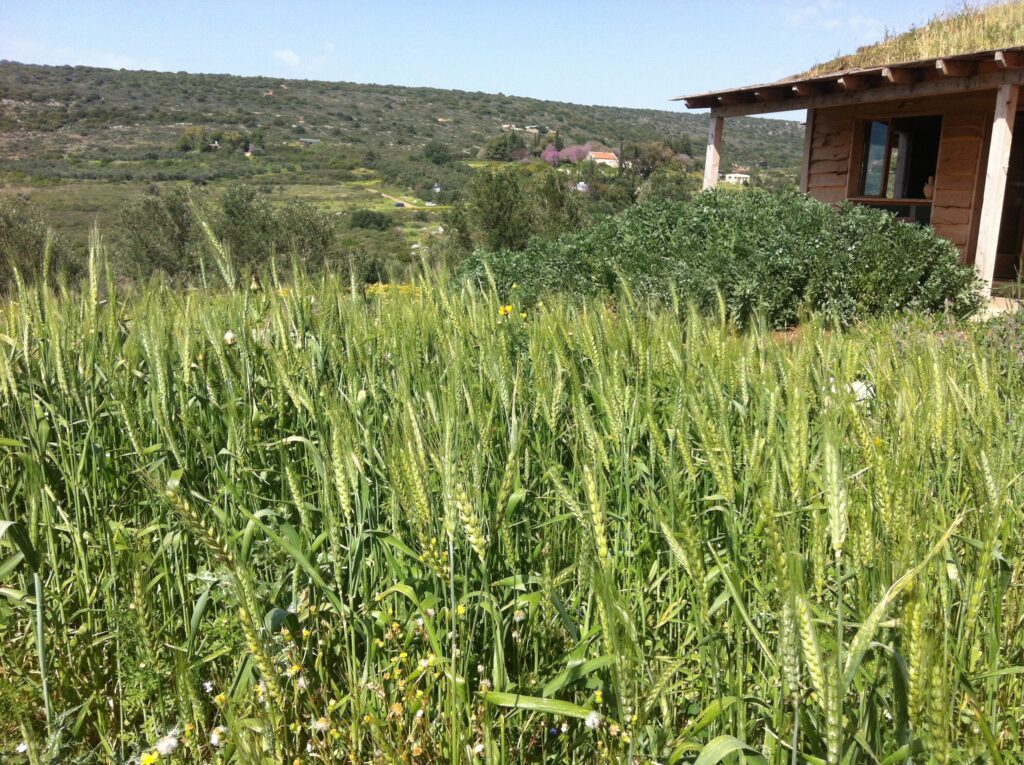Urban sprawl is a form of spatial development, characterized by low densities, scattered and discontinuous “leapfrog” expansion, and segregation of land uses, that is mainly found in open and rural lands on the edge of metropolitan areas. The early stage of urban sprawl, often referred as suburbanization, started at the end of the industrial era and continued since in Western countries and throughout the world. More recent patterns of sprawl are the American “edge city”, or the European FUR, which represent the phase of disurbanization in the cyclic model of development process of metropolitan regions. Critics of sprawl are concerned by its many alleged negative impacts such as: lack of scale economies which reduces the level of public services in the suburbs and weakens the economic base of central cities; increased energy consumption and use of private vehicles in the suburbs which causes traffic congestion and air pollution; and irreversible damage to ecosystems caused by scattered and fragmented urban development in open lands.
The objective of this research is to describe and explain urban sprawl in Israel through land-use mapping in a large sample of urban settlements, empirical measuring of its characteristics, modeling its behavior as well as its interaction with spatial and socio-economical variables.
Worldwide awareness of environmental issues caused by accelerated urban development and sprawl started in the mid 80’s, and was mainly expressed at the 1987 World Commission on the Environment and Development and the 1992 Rio de Janeiro Congress on Sustainable developmentent. Since then, terms like Growth Management, Smart Growth, Sustainability, New Urbanism and Compact City became familiar in the planning jargon, being suggested as practical strategies to deal with negative impacts of urban sprawl. But not all planners agree that sprawl is a negative phenomenon that needs to be dealt with. Some believe that urban sprawl is either inevitable, due to consumer preferences, harmless or even a positive phenomenon that enhances the quality of life and welfare of society. Disagreements among planners include various definitions of sprawl, its causes, characteristics and impacts, methods of measuring and modeling and the effectiveness as well of the ethical necessity to regulate it. These disagreements represent the perpetual debate between the regulatory planning approach and the more liberal and laissez-faire one.
Urban sprawl in Israel started two decades ago, but has not been yet empirically measured or characterized. Major processes that influenced sprawl in Israel were the rise of life level and housing welfare, consumer preference of low density and single family housing in the suburbs, along with the arrival of one million immigrants from the former USSR during the 90’s; all of which lead to massive transformation of agricultural land into urban land-uses all over the country and maybe to sprawl-like patterns of development. Planners in Israel are concerned with sprawl’s negative impacts, and the wasteful land consumption it leads to; especially regarding Israel’s unique condition as a small country with few land reserves but a relatively high population growth rate, as opposed to other Western countries where land reserves are abundant or else population growth rates are very small or even negative. Critics of sprawl in Israel also refer to its societal impacts, amongst which are economical benefits gained by the rural sector, leading to discrimination of the urban sector, and the misfit of sprawl’s “American-like” patterns to the Israeli reality and culture.
The purpose of this study was to provide a rather comprehensive database and better understanding of urban sprawl in Israel, enlightening its dynamics and its spatial and socio-economical aspects. Urban land-use survey was performed in 78 Jewish urban settlements and was then compared to a previous survey performed by the Israeli Central Bureau of Statistics (CBS) 15 years earlier. Measures of sprawl at the beginning and the end of the investigated period were defined, calculated and compared, enabling the description of sprawl rates and dynamics during a time period of two decades. Multiple regression models were employed to analyze the relation between sprawl measures and spatial and socio-economical variables, being defined as possible causes of sprawl. Based on the model results, the research hypotheses were tested.
Being mainly concerned by sprawl’s land consumption impacts, the measures of sprawl implemented in this study were defined from a landscape perspective. Any landscape, or landscape footprint, is generally defined by two characteristics: configuration and composition. Each characteristic can be differently measured, using measures and indices from various research disciplines, such as urban research, ecological research or fractal geometry. All in all we used 13 sprawl measures divided into five main groups that quantify the urban landscape: density, shape and fractals, leapfrog and mean patch size, representing the landscape’s configuration, and land-use composition, representing the landscape’s composition.
All 13 sprawl measures were weighted into one integrated sprawl index via factor analysis performed for the end of the investigated period. A similar integrated index was calculated for the beginning of the period, multiplying the relevant measures by component score coefficients received for the end of the period, thus enabling a consistent comparison between the two indices and a dynamic analysis of sprawl during this period. Using various sprawl measures from different disciplines, as well as weighting them to one integrated index, and the combination of spatial and socio-economical databases, is rather unique comparing to studies dealing with sprawl around the world, and to our best of knowledge has never been similarly performed before in Israeli studies. This research methodology shows that urban sprawl is a multidimensional phenomenon that cannot be simply described by only one or two popular measures, e.g. density or growth rates, as often is done in other urban studies.
The results of this study show that most urban settlements in Israel have become less sprawling and more compact during the past two decades, as density and mean patch size measures got higher; shape, fractal and leapfrog measures got lower; and land-use composition hasn’t dramatically changed during the investigated period. This relatively compact pattern of development uniquely characterizes Israel, as opposed to other North American countries, and may result from limited amount of land reserves that cause a more regulative planning policy and denser and more compact forms of urban development.
Although built-up areas growth rate during the investigated period was high (26%) and almost all additional built-up areas were added upon open and rural lands, population growth rate was higher (44%), thus the mean gross density of the sample increased by 13.9%. This positive density growth rate may have resulted from high capacity of both cities and smaller towns, where part of the new population could have been absorbed in an in-fill manner inside existing urban built-up areas without developing land in a similar or higher growth rate. This high capacity could have resulted from either high amount of vacant dwellings in older cities, were new immigrants were absorbed; or from high amount of available land inside smaller quasi-rural settlements, where agricultural land was transformed into urban land and was in-filled by high amount of lower density detached single-family residential units; thus mean densities in those settlements increased, although the development pattern in this case was rather sprawling, due to high percentage of detached residential units. This example of quasi-rural settlements proves the necessity of as many sprawl measures as possible, and the fact that we cannot rely on density as an exclusive measure of sprawl.
The integrated sprawl index composed in this study represents three characteristics, or dimensions, of urban sprawl in a landscape perspective: density, scatter and mix of land-use. Some settlements were ranked as sprawling or compact by all dimensions, and some were ranked so by part of them. It has also been found, that different sprawl patterns, by domination of specific characteristic, may have different impacts on the urban built-up area. For example, low-density or scattered patterns of sprawl are interlinked to higher rates of land consumption and population growth, while a low mix of land-use pattern of sprawl is interlinked to increased use of private vehicles. This variety of sprawl and compact patterns, and their different impacts on the urban landscape also proves that sprawl is a multidimensional phenomenon that is best quantified by various measures.
During the analysis, higher population and land consumption growth rates were found in more sprawling settlements. This finding proves higher consumer preferences to reside in more sprawling patterns, due to the increase in quality of life. This argument is also proved by the significant correlation found between sprawl and higher socio-economic parameters such as income, dwelling ownership, car ownership and employment in academic professions. In this case we might expect sprawl to increase in the future, as we expect the continuation of quality of life increase in Israel. Therefore, considering the lack of available land in Israel, attempts to regulate and stop sprawl in Israel might be justified. Definite conclusion on this matter requires further investigation of consumer preferences, alleged positive impacts of sprawling patterns that are perceived by consumers, and a measuring of sprawl rates and sprawl change during a longer time period.
Another major finding in this study is that the sprawl’s mechanism in Israel, however small rates of sprawl we have, is quite similar to other Western countries. That is, variables that cause and enhance sprawl in Israel are similar to those found in other studies such as: smaller population size, higher amounts of available land, mountainous topography and higher socio-economic level of residents. The fact that sprawl rates are higher in smaller settlements, amongst which are many quasi-rural settlements, implies that sprawl rates may be higher in rural settlements than urban settlements. Since this study focused on Jewish urban settlements, it is highly recommended to continue and investigate other sectors in Israel, especially the rural and Arab sectors, which might be more relevant to sprawl and its impacts on land consumption.
In conclusion, this study attempted to define and measure sprawl in Israel, as well as identify major variables that cause and enhance its level in various dimensions. An integrated sprawl index was weighted by factor analysis and was used as a dependent variable in multiple regression models. The proposed model provided a rather comprehensive understanding of urban sprawl in Israel and its causes, implying its multidimensional aspects, causes, patterns and impacts. We hope that these findings contribute empirical data about the nature of development and patterns of urban built-up areas in Israel, and will serve decision-makers as a basis for spatial development policy to ensure sustainability and smart growth.
We recommend the implementation of more interdisciplinary sprawl measures suggested in the international literature, e.g. transportation and accessibility, esthetic and ecological measures. Further investigation of sprawl is recommended in the rural and Arab sectors in Israel, as well as areas outside municipal borders all over the country. More possible causes of sprawl need to be studied, such as land ownership, economic and fiscal constraints and level of regulatory planning. The next challenge will be to identify environmental, socio-economic, esthetic and normative impacts of various development patterns on urban areas, while asking the most intriguing question: Is urban sprawl a positive or negative phenomenon, and is it inevitable or may be controlled and restrained?











